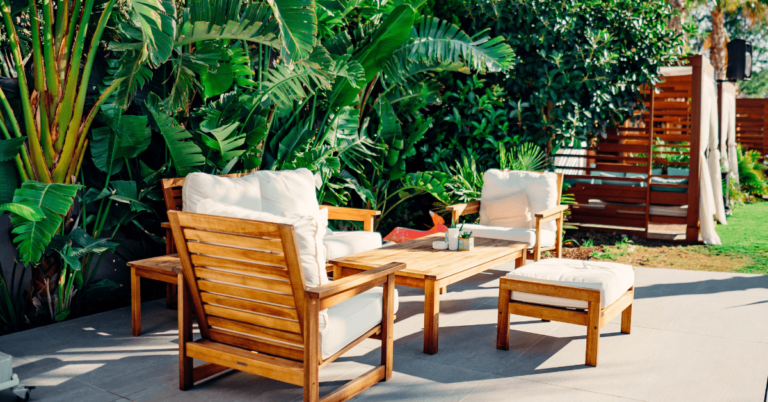As the holiday season approaches and winter sets in, it’s essential to think about protecting your outdoor furniture. Just like any investment in your home, taking the right steps to store and winterize your patio pieces ensures they last for years to come. With a few essential tips and tricks, you can keep your furniture looking pristine and ready for the warm days ahead.
Why Winterize Outdoor Furniture?
Extend Lifespan
Winterizing your outdoor furniture not only helps extend its lifespan but also saves you time and money in the long run. Proper storage prevents wear and tear caused by harsh weather conditions, meaning less maintenance when spring rolls around. By taking the time to care for your furniture, you can enjoy your outdoor space without the hassle of extensive repairs or replacements.
Save Money
Investing in proper winterization methods can significantly reduce the costs associated with repairs or replacements. Taking care of your furniture ensures you won’t have to spend on new pieces every spring.
Maintain Aesthetic Appeal
Well-maintained furniture enhances the overall appearance of your outdoor space, allowing you to enjoy your home’s exterior without the eyesore of damaged or faded furniture.
Essential Steps to Properly Store Outdoor Furniture
1. Clean Outdoor Furniture Before Storing
Before storing your outdoor furniture, it’s crucial to give it a thorough cleaning. Here’s how:
Gather Supplies:
Fill a bucket with warm water and a few drops of mild detergent. For stubborn stains, consider adding a small amount of bleach (remember to wear gloves while doing this).
Scrub the Furniture:
Using a soft brush, gently scrub the surfaces of your furniture to remove dirt, dust, and any debris. This method is safe for most materials, including teak, metal, and plastic. However, avoid using a power washer, as it can damage the surfaces.
Focus on Fabric:
If your furniture has cushions, check if they have removable covers. Washing these covers at least once per season keeps them fresh. For cushions without removable covers, use a mild cleaner and a damp cloth to wipe them down.
2. Choose the Right Storage Location
After cleaning, it’s time to decide where to store your furniture. Here are some options:
Indoor Storage:
If you have space in your garage or shed, storing furniture indoors is ideal. This method offers the best protection against winter elements.
Outdoor Covers:
If leaving your furniture outside is necessary, invest in high-quality protective covers. Look for covers made from durable, waterproof, and fade-resistant fabric. Here are key features to consider:
- Secure Fastenings: Ensure the cover has buckles and straps to prevent wind from blowing it away.
- Ventilation: Choose covers with ventilation to allow air circulation, which helps prevent mildew build-up.
- Sloped Design: Covers with sloped angles allow snow and rain to slide off easily, minimizing the risk of water pooling.
Storage Tips for Cushions:
If you’re concerned about leaving cushions outdoors, store them indoors in vacuum-sealed bags to protect against moisture and pests. Ensure they are clean and dry before sealing.
3. Inspect and Repair
Once spring arrives, it’s time to take your furniture out of storage and inspect it for any damage. Here’s how to handle common issues:
Teak Furniture:
If your teak pieces have lost color, use a teak cleaner recommended by the manufacturer, followed by a coat of teak oil to restore their natural luster and prevent cracking.
Aluminum Furniture:
Rinse aluminum furniture with water to remove debris, and if needed, use a gentle cleaner to refresh its appearance.
Rust on Wrought Iron:
Use a wire brush to gently buff away rust. For any remaining stains, apply the same cleaning method used before storing.
Plastic Furniture:
Low-maintenance plastic furniture can also be cleaned with a hose to remove dirt.
Additional Tips for Winterizing Outdoor Furniture
- Store Accessories: Don’t forget to store any accessories like tables, umbrellas, and fire pits. Disassemble or collapse them if possible to save space.
- Consider a Furniture Shed: If you frequently experience harsh winters, consider investing in a dedicated furniture shed for additional protection.
- Keep Furniture Dry: Ensure that your furniture is completely dry before covering or storing it to prevent mold and mildew.
Conclusion
By following these home improvement steps to properly store and winterize your outdoor furniture, you can protect your investment and ensure it remains beautiful and functional for many seasons to come. Taking a little time each year to care for your patio pieces will save you effort in the long run, allowing you to enjoy countless warm nights outdoors with family and friends.

